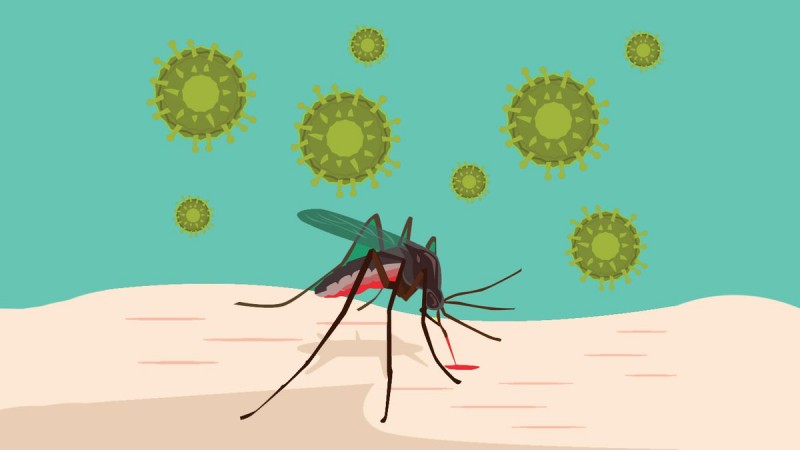
In a recent medical anomaly that has left the medical community in Mumbai astounded, a 90-year-old woman was diagnosed with a simultaneous co-infection of vivax and falciparum Malaria along with Dengue virus. This unique and perplexing case was reported by the Times of India, and it has shed light on the severe consequences that such co-infections can entail.
When the elderly woman was admitted to the hospital, her condition was dire. She presented with significantly declining platelet counts, compromised lung and renal statistics, and an alarmingly high fever. The medical team had to act swiftly to address this complex health challenge.
The triple infection of vivax and falciparum Malaria combined with Dengue had a profoundly negative impact on the patient's health. To counter the severity of the situation, doctors made the crucial decision to place her on a ventilator. This marked the beginning of a challenging journey toward recovery.
Fortunately, after several days of intensive treatment involving antimalarial therapy and specialized care for Dengue, the elderly patient displayed signs of improvement. Her remarkable recovery stands as a testament to the dedication and expertise of the medical professionals involved.
The timing of this case is significant as it occurred during the monsoon season. During this period, infectious diseases like Dengue and Malaria tend to spike, primarily due to the favorable conditions for disease vectors to thrive. Stagnant water pools act as breeding grounds for these vectors, making them more abundant.
One of the critical takeaways from this case is the heightened risk associated with mixed infections. When individuals contract multiple diseases simultaneously, it can lead to worsened outcomes, and in some cases, it can be fatal. This is particularly true when patients develop severe forms of one or more of these infections.
Experts point out that many of these infections share a common vector, which serves as a carrier for various strains, parasites, and even viral bacteria. This shared vector plays a pivotal role in the occurrence of co-infections like the one witnessed in this elderly patient.
The prevalence of diseases like dengue-gastroenteritis during the monsoon season can be attributed to stagnant water pools. These pools serve as ideal breeding grounds for disease vectors, contributing to the increased transmission of these diseases.
One of the key challenges in managing cases like these is the accurate differentiation between Dengue and Malaria. These two diseases have distinct characteristics:
Malaria is caused by the plasmodium parasite and is primarily transmitted by the Anopheles mosquito. This parasitic infection leads to a pattern of fever known as benign tertian fever.
In contrast, Dengue is a viral disease with its unique set of characteristics. It typically manifests roughly three days after infection and is known for its abrupt onset and subsequent subsiding fever.
Distinguishing between these diseases is further complicated by their unique symptoms. Malaria, for instance, does not typically cause fluid leakage, whereas Dengue can lead to this alarming symptom, posing additional risks to patients. Dengue is notorious for causing a significant drop in platelet counts as the virus damages bone marrow. In contrast, malaria may result in eosinophil leukocytosis, while Dengue tends to cause leukocytopenia.
Malaria is characterized by symptoms such as fever, chills, headaches, nausea, vomiting, and muscle pain.
On the other hand, Dengue often presents with severe pain behind the eyes, swollen glands, and skin rashes, setting it apart from Malaria.
In conclusion, the co-infection of vivax and falciparum Malaria along with Dengue in this elderly patient underscores the complexity and challenges faced by the medical community, particularly during the monsoon season when diseases like these are on the rise. Prompt and accurate differentiation between these diseases is paramount for effective medical intervention and patient recovery.
Study Reveals Promising Treatment for Fatty Liver Disease
The Benefits of Adding Soaked Flaxseeds to Your Morning Routine
Nipah Alert in Kerala, Nipah Virus Precautions: Protecting Yourself and Others